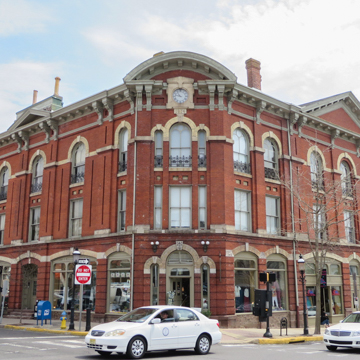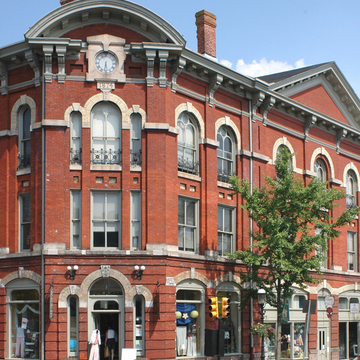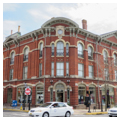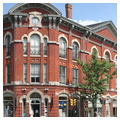When Doylestown's citizens perceived that their village was failing to compete with other regional centers that were better served by rail lines, they commissioned an opera house and commercial building, which was named the Lenape Building to recall the regional Native Americans. Standing diagonally across from the Fountain House, it forms a part of the town center and is a striking testament to the growing urban energy of the nation after the Civil War. Its chamfered facade addresses the old market square but its conservative Second Empire massing and ordering systems are overlaid by the brilliant red brick and carved Ohio stone details that are more characteristic of Victorian Philadelphia. The building was a typical urban block with commercial space on the first floor and a large public auditorium that could double as an opera house on the upper levels. The milestone inscribed “26 M[iles] to Philadelphia” that is incorporated into the Main Street facade stood in front of the eighteenth-century Ship Tavern that was demolished for the project. Remarkably, the
You are here
Lenape Building
1874, Thomas Cernea and Addison Hutton. S. Main and E. State sts.
If SAH Archipedia has been useful to you, please consider supporting it.
SAH Archipedia tells the story of the United States through its buildings, landscapes, and cities. This freely available resource empowers the public with authoritative knowledge that deepens their understanding and appreciation of the built environment. But the Society of Architectural Historians, which created SAH Archipedia with University of Virginia Press, needs your support to maintain the high-caliber research, writing, photography, cartography, editing, design, and programming that make SAH Archipedia a trusted online resource available to all who value the history of place, heritage tourism, and learning.























